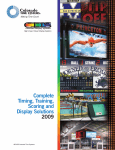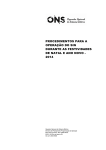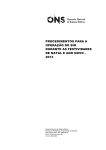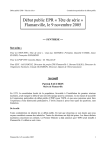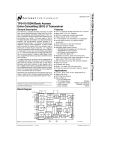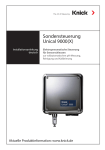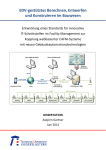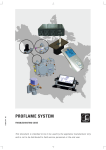Download Montigo GTMS Technical data
Transcript
PROFLAME GT-GTM-GTMF-GTMFS 9.955.093 00 (09) Subject to change without notice ADVANCED REMOTE CONTROL SYSTEMS w 0_I00_gtmf_cat_only 0-1 1 w w . s i t g r o u p . i t 1/0/00 1.0. • The Standalone Proflame is an automatic ignition gas control system that includes an user selectable intermittent or standing pilot. Features include: twin safety system with true flame detection for enhanced safety and reliability, On/Off, Manual Hi/Low, and Remote modulation valve configurations, integrated for use with the Proflame Remote Control GT, GTM, GTMF, GTMS and GTMFS families, operable from a wall switch or a remote control, a low power consumption design provides a choice for AC power, Battery power or AC power with Battery back up. The 880 Proflame Control provides basic ON/OFF operation of gas flow to the pilot and main burners of the heating appliance. The 886 Proflame Control has the same functions as the 880 control except that it includes HI/LO knob for manual flame height adjustment. The Proflame controls are designed to be used with either LPG or Natural Gas and can be converted by use of an OEM supplied conversion kit. The 880 valves can also be upgraded to 886 configurations by installing OEM supplied conversion kits. • The Proflame GTMS is a modular remote control system that directs multiple functions of modern hearth appliances. The GTMS is configured to control the on/off and flame height operation of the main burner, provides for thermostatic control of the appliance and Split Flow dual burner control. The control features an advanced Smart thermostat which automatically modulates the flame height optimizing room temperature management. The Proflame GTMS system is specifically developed to be used together with the Proflame 885 valve, Digital Fireplace Control (DFC) board and provides battery back up in the event of line power loss. • The Proflame GTMFS is a modular remote control system that directs multiple functions of modern hearth appliances. The GTMFS is configured to control the on/off and flame height operation of the main burner and provides for thermostatic control of the appliance. Additional features include; fan speed control through 6 levels, a remotely actuated 120/60Hz power outlet and Split Flow dual burner control. Comfort control is advanced by the Smart thermostat feature which automatically modulates the flame height optimizing the temperature management and the room ambience. The Proflame GTMFS system is specifically developed to be used together with the Proflame 885 valve, Digital Fireplace Control (DFC) board and provides battery back up in the event of line power loss. 0_I00_gtmf_cat_only 0- 1/0/00 1.0. PROFLAME Standalone SPLIT FLOW GTMF & GTMFS ONLY GTMFS ONLY PROFLAME FMC IGNITION BOARD SPLIT FLOW PROFLAME Receiver 880 PROFLAME Combination Gas Control GTMF & GTMFS ONLY GTMFS ONLY PR OF FM LAM C E IGNITION BOARD PR O Re FLA ce M ive E r 82 0 Co NO m VA bin m ati illi on vo Ga lt H s C I-L on O W tro l 885 PROFLAME Combination Gas Control PROFLAME FMC IGNITION BOARD PROFLAME Receiver 885 PROFLAME Combination Gas Control 880 PROFLAME 820 millivolt HI-LOW Combination Gas NOVA Control PROFLAME Combination Gas Control Transmitter 886 PROFLAME Combination Gas Control 885 PROFLAME Combination Gas Control PROFLAME Transmitter 829 NOVA millivolt Combination Gas Control SPLIT FLOW 820 NOVA millivolt HI-LOW Combination Gas Control 829 NOVA millivolt Combination Gas Control OF FM LAM C E GTMF & GTMFS ONLY PR GTMFS ONLY PROFLAME PR O Re FLA ce M ive E r FMC SPLIT FLOW PRO GTMFS ONLY FLA FM ME C ME PROFLA FMC PROFLAME 82 FMCCo 9 NOVA millivolPtR mbination OFL Gas Cont A Rero celi ME ver ME PROFLA r Receive Combination Gas Control Receiver ME PROFLA r itte 885 PROFLAME Transm 885 PROFLAME Combination Gas Control PROFLAME ME 886 PROFLAME PROFLA Combination Gas Control Transmitter C FM Combination Gas Control SPLIT FLOW PROFLAME FMC PROFLAME Receiver PROFLAME Receiver PROFLAME Transmitter PROFLAME Transmitter PROFLAME 82 0 Co NO m VA bin m at illi ion vo Ga lt H s C I-L on O W tro l PR 886 PROFLAME OF millivolt 886 PROFLAME 820 NOVA millivolt HI-LOW Transmitter 829 NOVA Combination Gas Control LA FMControl Combination Gas Combination Gas Control M E Combination M C GasEControl PROFLAME GTMF & GTMFS ONLY PROFLA r e iv FMC ece 829 R GTMFS ONLY Com N PR bin OVA O atio mPilR Re FLA n GTr liOvoF l ce M asanC LtA ive E somnt M E r ittrol PROFLAME IGNITION BOARD er PROFLAME 820 NOVA 829 NOVA millivolt 880 PROFLAME FMC millivolt HI-LOW GTMF only E M LA 82 Receiver ROF Combination Gas Control Combination 0 Gas Control Combination Gas Control ill 820 NOVA millivolt HI-LOW r ivolt l PRP NNOVA m te A 829 NOVA millivolt it V Co NO O sm 820 millivolt HI-LOW 9OaFn 829 NOVA millivolt Tr8a2Tr Contro m VA Combination Gas Control Gas Control on Gas Gas ControlCombinationGTMS b n inaLti AM Combination m & GTMFS ONLY Gas Control Combination Combsm 829 NOVA millivolt inati illi GT only E W i LO It on vo H t lt er Combination Gas Control millivo Ga lt H ntrol PROFLAME o 0 NOVA n G880 C 2 s 8 I a s PROFLAME 885 PROFLAME Co LO atio Receiver SPLIT FLOW nt W Combin Combination Gas Control Combination Gas Control PROFLAME ro l Transmitter GTMF & GTMFS ONLY livolt HI-LOW Gas Control Co 829 m bin NO ati VA on mi Ga llivo s C lt on tro PROFLAME IGNITION BOARD880 PROFLAME PROFLAME FMC PROFLAME Combination Gas Control FMC Transmitter PROFLAME 880 PROFLAME 880 PROFLAME Receiver 885 PROFLAME Combination Gas Control Combination Gas Control PROFLAME PRO Tra FLAM ns E 829 NOVA millivoltmitte r Combination Gas Control SPLIT FLOW PR PROFLAME OF L Transmitter GTMF & GTMFS ONLY FM AME C GTMFS ONLY PR O Re FLA ce M IGNITION BOARDiver E PROFLAME GTMF & GTMFS ONLY Receiver GTMFS ONLY IGNITION BOARD PROFLAME Receiver PROFLAME FMC IGNITION BOARD Co 82 m 9N bin O at VA ion m Ga illivo s C lt on tro l GTMF & GTMFS ONLY SPLIT FLOW PR Tra OF ns LAM m itt E er PROFLAME Transmitter VA m atio illivol n G t HIas C LOW ont rol Combination Gas Control 886 PROFLAME Combination Gas Control l PROFLAM E PROFLAMETransmitter Receiver 820 NOVA millivolt HI-LOW Combination Gas Control PROFLAME Receiver 829 NOVA millivolt PROFLAM E FMC PROFLAM E 820 NOVARe millivolt ceiver HI-LOW Combination Gas Control PROFLAME FMC 820 NOVA millivolt HI -LOW Combinatio n Gas Cont rol PROFLAME Transmitter PROFLAME GTMF & GTMFS ONLY FMC GTMFS ONLY 886 PROFLAME Combination Gas Control 880 PROFLAME PR Combination Gas Control Tra OFL ns AM m itt E er Co 829 m bin NO ati VA on mi Ga llivo s C lt on tro SPLIT FLOW 820 NOVA millivolt HI-LOW l 885 PROFLAME 886 PROFLAME Combination Gas Control Combination Gas Control Combination Gas Control Co 829 m bin NO ati VA on mi Ga llivo s C lt 886 PROFLAME on Combination Gas Control tro l 8200- NOVA millivolt HI-LOW 0_I00_gtmf_cat_only Combination Gas Control W olt HI-LO ol VA milliv NOVA 820 NO tio829 as Contrmillivolt G n ombina GTMFS ONLY 829 NOVA millivolt Combination GasPROFLAME Control Transmitter IGNITION BOARD PROFLAME FMC olt VA milliv 829 NO Gas Control tion a in b m Co 880 PROFLAME Combination Gas Control PROFLAME Receiver 1/0/00 1.10. S GTM G IGNI 8 Comb 8 Comb main characteristics FeatureIcon GT • • • • • Room Temperature Display Child Lock Low Battery On/Off Thermostat Flame On/Off only • • • • • • • • • • • • • • • • • • Flame On/Off & Modulation (6 Levels) • Smart Thermostat Fan Speed Control (6 Levels) On/Off Auxiliary Outlet (120V) PROFLAME GTM GTMS GTMF GTMFS Constant Outlet (120V) Split flow • • • • • • • • • • • • • • • • • • • • • (•) Indicates included Features technical data remote control Supply voltage: Ambient temperature ratings: Radio frequency: 4.5 V (three 1.5 V AAA batteries) 0 to 50 °C (32 to 122 °F) 315 MHz receiver Supply voltage: Ambient temperature ratings: Radio frequency: 6.0 V (four 1.5 V AA batteries) 0 to 60 °C (32 to 140 °F) 315 MHz 0_I00_gtmf_cat_only 0- 1/0/00 1.10. fan control module (Proflame GTMF & GTMFS only) Supply voltage/frequency: Ambient temperature ratings: Three wires bus: Output voltage/frequency/current: Aux switched output: Fan speed output: 120 V / 60 Hz 0 to 60 °C (32 to 140 °F) two wires to provide DC voltage to the receiver; one wire gives uni-directionally signal from the receiver 120 V / 60 Hz / 5 A 120 V / 60 Hz / 2 A 120 V / 60 Hz / 1 A DFC control board Supply voltage Ambient temperature ratings Spark voltage Spark energy Spark frequency Tested gas types Pilot ignition source DC IN: 7Vdc - 200mA max (Class 2 power supply) BB IN: 6Vdc - 200mA max (four 1.5V size AA batteries) -18 to +80 °C (0 to +176 °F) >15kV >0,7mJ 1Hz the system has been tested both for NG, and LPG gas types/mixtures Intermittent/Continuous system COMPONENTS The Standalone System consists of four main elements: 1. Proflame Digital Fireplace Control (DFC) 2. Proflame 880, or 886 families of gas valves 3. Pilot assembly 4. Proflame DFC wiring harness to connect the DFC to the gas valve, and to the pilot burner The GTMS System consists of eight main elements: 1. Proflame GT Series Transmitter 2. Proflame GT Series Receiver 3. Proflame Digital Fireplace Control (DFC) 4. Proflame Gas Valve 885 family (also the 880, 886 families are compatible) 5. Pilot assembly 6. Split Flow Control (optional) 7. Proflame GT Series wiring harness to connect the Receiver to the DFC wirings, to the Gas valve stepper motor, and to the Split Flow Control 8. Proflame DFC wiring harness to connect the DFC to the gas valve, and to the pilot burner The GTMFS System consists of nine elements: 1. Proflame GT Series Transmitter 2. Proflame GT Series Receiver 3. Proflame Fan Control Module (FCM) 4. Proflame Digital Fireplace Control (DFC) 5. Proflame Gas Valve 885 family (also the 880, 886 families are compatible) 6. Pilot assembly 7. Split Flow Control (optional) 8. Proflame GT Series wiring harness to connect the Receiver to the FCM, to the DFC wirings, to the Gas valve stepper motor, and to the Split Flow Control 9. Proflame DFC wiring harness to connect the DFC to the gas valve, and to the pilot burner. 0_I00_gtmf_cat_only 0- 1/0/00 1.10. transmitter (remote Control with LCD Display) The Proflame Transmitter uses a streamline design with a simple button layout and informative LCD displaywith blue back light (Fig.1). The transmitter is powered by 3 AAA type batteries. A Mode key is provided to index between the features and a Thermostat key Is used to turn on/ off or index through thermostat functions (Fig. 1 & 2A & 2B & 2C & 2D). Blue LCD display ON/OFF Key THERMOSTAT Key Up/Down Arrow Key MODE Key Fig. 1: Proflame Transmitter. Transmission Thermostat OFF/ ON Child safety lock-out Low battery alarm Room Temperature Set Point Temperature/State Flame ON Fig. 2A: Transmitter LCD display (Proflame GT configuration) 0_I00_gtmf_cat_only 0- 1/0/00 1.10. Transmission Child safety lock-out Low battery alarm Thermostat OFF/ ON/SMART Room Temperature Set Point Temperature/Level/State Flame ON Fig. 2B: Transmitter LCD display (Proflame GTM configuration) Transmission Child safety lock-out Low battery alarm Thermostat OFF/ ON/SMART Room Temperature Set Point Temperature/Level/State Fan Flame ON Aux ON Fig. 2C: Transmitter LCD display (Proflame GTMF configuration) Transmission Thermostat OFF/ ON/SMART Child safety lock-out Low battery alarm Room Temperature Set Point Temperature/Level/State Fan Flame ON Fig. 2D: Transmitter LCD display (Proflame GTMFS configuration) Split flow Aux ON 0_I00_gtmf_cat_only 0- 1/0/00 1.10. receiver The Proflame Receiver (Fig. 3) connects directly to the gas valve stepper motor, and to the Fan Control Module with a wiring harness. The receiver is powered by 4 AA type batteries. The receiver accepts commands via radio frequency from the Transmitter to operate the appliance in accordance with the particular Proflame system configuration. The Receiver slider switch can be set to one of these three positions: ON (Manual Override), Remote (Remote control) or OFF. 12 PIN terminal PRG Key 3 Positions Slider Fig. 3: Proflame Receiver body. Fan Control Module (Proflame GTMF & GTMFS only) Fan Control Module (FCM) offers the added ability to control the fan speed from off through six (6) speeds, a remotely actuated 120V outlet, and a constantly powered 120V outlet. The FCM provides DC power to the receiver allowing the batteries to be used only in the event of line power loss (Fig.4). Mains voltage supply cord module on/off switch communication bus (3 pin) AUX outlet plug FAN outlet plug Mains voltage plug Fig. 4: Fan Control Module. 0_I00_gtmf_cat_only 0- 1/0/00 1.1.00 DFC control board The Proflame Digital Fireplace Control (DFC) board is a device that allows the automatic ignition and pilot flame supervision, to command the functions of a hearth appliance, see fig.4A. It’s configured to control the ON/OFF main burner operation, giving the choice of both IPI (intermittent pilot ignition), and CPI (continuous pilot ignition) modes. The Proflame DFC board controls and connects directly to the pilot assembly and an automatic valve of the Proflame 880, 886 and 885 families using low electric power. The DFC Board can be powered by an AC/DC wall adaptor and battery pack for back up (Stand Alone System). When used with the Proflame Remote System, with or without a split flow valve, the DFC Board can be powered by an AC/DC wall adaptor via specific wire harness using the receiver batteries for back up (GTM System). Additionally, the DFC Board can be powered by the Fan Control Module (FCM) via specific wire harness using the receiver batteries for back up (GTMF System). DIAGNOSTIC IONIZATION SPARK GROUND MAIN WIRING VALVE, COMMAND, POWER Fig. 4A: Proflame DFC Board. 0_I00_gtmf_cat_only 0- 1/0/00 1.1.0 installation Receiver The receiver can be placed inside a standard junction type wall box or a low temperature area of the appliance. Wall Mounting 1. Connect the wiring harness to the back of the receiver. 2. Install the receiver in the Junction box using the existing J box screws. (Fig. 5) 3. Insert the 4 AA type batteries in the battery compartment with the correct polarity. 4. Place the slider into the cover plate. 5. Put the receiver switch in the “OFF” position. 6. Make sure the receiver and cover plate words “ON”and “UP” are on the same side. 7. Align the slider with the switch on the receiver and couple the switch into the slider. 8. Align the screw holes. 9. Using the two (2) screws provided secure the cover plate to the receiver. Fig. 5 Hearth Mounting 1. Connect the wiring harness to the back of the receiver. 2. Install the 4 AA type batteries in the battery compartment with the correct polarity. 3. Make sure the receiver and cover plate words “ON” and “UP” are on the same side. 4. Place the slider into the cover plate. 5. Align the slider with the switch on the receiver and couple the switch into the slider. 6. Using the two (2) screws provided secure the cover plate to the receiver. Fan Control module (Proflame GTMF & GTMFS only), and DFC control board The FCM must be placed in a low temperature area of the appliance. The Proflame DFC board should be placed in a low temperature area of the appliance. Connecting to the 880/886 Gas Valve and DFC control board The electrical connections must be in accordance to Fig. 6A. ON / OFF CPI / IPI MODE Orange ON/OFF Green IPI/CPI Battery Holder Red Black 880/886 Proflame VALVE BATTERY 120 Vac INPUT 7 Vdc STABILIZED SUPPLY OUTPUT Chassis connection GROUND DFC DC SUPPLY Fig. 6A: Proflame Standalone & 880/886 PROFLAME wiring diagram. 10 0_I00_gtmf_cat_only 0-10 10 1/0/00 1.1.0 Connecting to the 885 Gas Valve and DFC control board (Proflame GTM & GTMS & GTMF & GTMFS only) The electrical connections must be in accordance to Fig. 6B ( GTM & GTMS) or 6C (GTMF & GTMFS). 120 Vac INPUT 7 Vdc STABILIZED SUPPLY OUTPUT REMOTE REMOTE MOTOR DC SUPPLY Receiver 14 Pin Connector Orange Pilot Green Pink Blue GTMS only Split Flow RECEIVER 885 PROFLAME SPLIT FLOW Chassis connection GROUND TPTH TH ON / OFF Remote control DC SUPPLY DFC SUPPLY IPI/CPI CPI / IPI MODE Fig. 6B: Proflame GTM & GTMS & 885 PROFLAME wiring diagram. REMOTE 120V OUT REMOTE MOTOR FCM-COM Receiver 14 Pin Connector Orange Pilot Green Pink Blue GTMFS only Split Flow RECEIVER 885 PROFLAME SPLIT FLOW TH GROUND TPTH ON / OFF Chassis connection Remote control DFC SUPPLY DFC SUPPLY IPI/CPI CPI / IPI MODE Fig. 6C: Proflame GTMF & GTMFS & 885 PROFLAME wiring diagram. 11 0_I00_gtmf_cat_only 0-11 11 1/0/00 1.1.10 Preliminary check of a Standalone Proflame system Before applying any power supply to the DFC board please verify that the electrical connections are in accordance to Fig. 6A Initializing the System for the first time Set the main burner ON/OFF switch to the OFF position. If installed, set the pilot flame mode selector switch to the IPI position. Install 4 AA batteries into the battery holder, and respect the polarity indicated on the battery holder silkscreen. Connect the battery holder to the DFC’s main wiring harness. Connect the AC/DC wall adapter to the DFC’s DC-jack connector on the main wiring harness, and plug it into the wall mains supply. Setting the Appliance into Continuous Pilot ignition mode If installed on the wirings, set the IPI/CPI Pilot Mode Switch to the CPI position (switch closed). At that point the DFC ignition board will immediately complete the ignition sequence for the Pilot Flame, and then will remain with the Pilot Flame ON, waiting for a command to ignite the Main Burner Flame. Turning ON the Appliance Close the ON/OFF command contact on the ON/OFF wires, and this will command the DFC ignition board to Turn-ON the appliance’s main burner. Turning OFF the Appliance Open the ON/OFF command contact on the ON/OFF wires, and this will command the DFC ignition board to Turn-OFF the appliance’s main burner. NOTE: if the Continuous Pilot ignition mode is selected, the Pilot ON Flame will remain. To also turn it completely OFF, switch the appliance into Intermittent Pilot ignition mode, so set the IPI/CPI Pilot Mode Switch to the IPI position (switch opened). Command definitions Pilot IPI / CPI switch Main Turn ON switch Command reference name Commanded Fireplace State Opened, IPI Opened Turn-OFF Flames OFF Opened, IPI Closed Turn-ON Pilot + Main burner flames ON Closed, CPI Opened Pilot-ON Pilot flame ON Closed, CPI Closed Turn-ON Pilot + Main burner flames ON 12 0_I00_gtmf_cat_only 0-1 1 1/0/00 1.1.11 OPERATING PROCEDURE for a remote control system Initializing the System for the first time Install the 4 AA batteries into the receiver battery bay. Note the polarity of the battery and insert into the battery bay as indicated on the Battery cover (+/-). Place the 3 position slider switch in the “REMOTE” position. (fig. 3) Insert the end of the paper clip or similar object into the hole marked “PRG” on the Receiver front cover (fig 3). The Receiver will “beep” three (3) times to indicate that it is ready to synchronize with a Transmitter. Install the 3 AAA type batteries in the Transmitter battery bay, located on the base of the Transmitter. With the batteries already installed in the Transmitter, push the ON button. The Receiver will “beep” four times to indicate the Transmitter’s command is accepted. The system is now initialized. Temperature indication Display With the system in the “OFF” position, press the Thermostat Key and the Mode Key at the same time. Look at the LCD screen on the Transmitter to verify that a °C or °F is visible to the right of the Room Temperature display. (Fig. 7) Fig. 7: Remote Control display in Farenheit and Celsius. Setting the Appliance into Continuous Pilot ignition mode If installed on the wirings, set the IPI/CPI Pilot Mode Switch to the CPI position (switch closed). At that point the DFC ignition board will immediately complete the ignition sequence for the Pilot Flame, and then will remain with the Pilot Flame ON, waiting for a command to ignite the Main Burner Flame. Turning ON the Appliance Press the ON/OFF Key on the Transmitter. The Transmitter display will show all active Icons on the screen. At the same time the Receiver will command the DFC board to start the ignition process. Once the pilot flame is proven the DFC board will open the main valve outlet and the appliance main burner will ignite. A single “beep” from the Receiver will confirm reception of the command. Fig. 8: Remote Control display. Turning OFF the Appliance Press the ON/OFF Key on the Transmitter. The Transmitter LCD display will only show the room temperature and Icon (Fig. 8). At the same time the Receiver disconnects will command the DFC board to turn off the burner. Depending on the system model (IPI or CPI) the pilot may shut off (IPI) or remain lit (CPI) and the appliance burner turns OFF. A single “beep” from the Receiver confirms reception of the command. NOTE: if the Continuous Pilot ignition mode is selected, the Pilot ON Flame will remain. To also turn it completely OFF, switch the appliance into Intermittent Pilot ignition mode, so set the IPI/CPI Pilot Mode Switch to the IPI position (switch opened). 0_I00_gtmf_cat_only 0-1 1 13 1/0/00 1.1.1 Flame Height Control Proflame GT: with the system on, and the flame present in the appliance, pressing the Down Arrow Key (Fig. 1) will turn OFF the flame while the remote system is still on. If the Up Urrow Key is pressed while in the above described state the flame will come on. ( Fig. 9A & 9D) Proflame GTM & GTMF: has six (6) flame levels. With the system on, and the flame level at the maximum in the appliance, pressing the Down Arrow Key (Fig. 1) once will reduce the flame height by one step until the flame is turned OFF. The Up Arrow Key will increase the flame height each time it is pressed. If the Up Arrow Key is pressed while the system is on but the flame is off, the flame will come on in the high position. ( Fig. 9A & 9B & 9C& 9D ) A single “beep” will confirm reception of the command. Fig. 8: Fig. 9A: Flame Off Fig. 9: Fig. 9C: Flame level 5 Fig. 9B: Flame Level 1 Fig. 9D: Flame Level Maximum Split flow function ( GTMS & GTMFS only ) The secondary burner is controlled by the split Flow. To activate this function use the Mode Key (Fig. 1) to index to the SPLIT FLOW icon (Fig. 9E & 9F). Pressing the Up Arrow Key will activate the secondary burner. Pressing the Down Arrow Key will turn the secondary burner OFF. A single “beep” will confirm the reception of the command. 14 0_I00_gtmf_cat_only 0-1 1 Fig. 9: Fig. 9E Fig. 9F 1/0/00 1.1. Room Thermostat ( Transmitter Operation) The Remote Control can operate as a room thermostat. The thermostat can be set to a desired temperature to control the comfort level in a room. To activate this function, press the Thermostat Key (Fig. 1). The Lcd display on the Transmitter will change to show that the room thermostat is “ON” and the set temperature is now displayed (Fig. 10). To adjust the set temperature, press the Up or Down Arrow Keys until the desired set temperature is displayed on the LCD screen of the Transmitter (Fig. 11). ROOM TEMPERATURE SET TEMPERATURE Fig. 10 Fig. 11 Smart Thermostat (Transmitter Operation) (Proflame GTM & GTMF & GTMFS only) The Smart Thermostat function adjusts the flame height in accordance to the difference between the set point temperature and the actual room temperatures. As the room temperature gets closer to the set point the Smart Function will modulate the flame down. To activate this function, press the Thermostat Key (Fig. 1) until the word "SMART" appears to the right of the temperature bulb graphic (Fig. 12). To adjust the set temperature, press the Up or Down Arrow Keys until the desidered set temperature is displayed on the LCD screen of the Transmitter (Fig. 13). Fig. 12: Smart flame function Fig. 13 15 0_I00_gtmf_cat_only 0-1 1 1/0/00 1.1. Fan Speed Control (Proflame GTMF & GTMFS only) If the appliance is equipped with a hot air circulating fan, the speed of the fan can be controlled by the Proflame system. The fan speed can be adjusted through six (6) speeds. To activate this function use the Mode Key (fig.1) to index to the fan control icon (Fig. 14). Use the Up/Down Arrow Keys (fig.1) to turn on, off or adjust the fan speed (fig. 15). A single “beep” will confirm reception of the command. Fig. 14 Fig. 15 Remote Actuated 120V Auxiliary Outlet (Proflame GTMF & GTMFS only) The auxiliary function controls the AUX power outlet on the Fan Control Module. To activate this function use the Mode Key (fig. 1) to index to the AUX icon (fig. 16 & 17). Pressing the Up Arrow Key will activate the outlet. Pressing the Down Arrow Key will turn the outlet off. A single “beep” will confirm the reception of the command. Fig. 16 Fig. 17 16 0_I00_gtmf_cat_only 0-1 1 1/0/00 1.1. Key lock This function will lock the keys to avoid unsupervised operation. To activate this function, press the MODE and UP keys at the same time (Fig. 18). To de-activate this function, press the MODE and UP keys at the same time. Fig. 18 Low Battery Power detection Transmitter The life span of the remote control batteries depends on various factors: quality of the batteries used, the number of ignitions of the appliance, the number of changes to the room thermostat set point, etc. When the transmitter batteries are low, an Icon will appear on the LCD display of the transmitter (Fig. 19) before all battery power is lost. When the batteries are replaced this Icon will disappear. Fig. 19 Receiver The life span of the receiver batteries depends on various factors: quality of the batteries used, the number of ignitions of the appliance, the number of changes to the room thermostat set point, etc. When the receiver batteries are low, No “beep” will be emitted from the receiver when it receives an On/Off command from the transmitter. This is an alert for a low battery condition for the receiver. When the batteries are replaced the “beep” will be emitted from the receiver when the ON/OFF key is pressed (See Initialization of The System). 17 0_I00_gtmf_cat_only 0-1 1 1/0/00 1.1. Manual override If the batteries of the Receiver or Transmitter are low or depleted, the appliance can still be turned on manually by sliding to the “ON” position the three position slider switch on the Receiver. This will bypass the remote control feature of the system and the appliance main burner will Turn-ON. APPENDIX Command definitions Pilot IPI / CPI switch Opened, IPI Opened, IPI Closed, CPI Closed, CPI Position of the receiver slider switch “OFF” “ON” “OFF” “ON” “REMOTE” and “OFF received” “REMOTE” and “ON received” “REMOTE” and “OFF received” “REMOTE” and “ON received” Command reference name Commanded Fireplace State Turn-OFF Flames OFF Turn-ON Pilot + Main burner flames ON Pilot-ON Pilot flame ON Turn-ON Pilot + Main burner flames ON 18 0_I00_gtmf_cat_only 0-1 1 1/0/00 1.1.0 115 REMOTE dimensional drawings PRG 70 102 REMOTE PRG 140 42 115 Hearth mounted REMOTE PRG 70 36 37 70 71 Wall mounted 102 70 70 REMOTE PROFLAME Transmitter PRG 42 PROFLAME Receiver 36 36 DFC Control Board PROFLAME FCM Dimensions are in millimeters 19 0_I00_gtmf_cat_only 0-1 1 1/0/00 1.1. SIT La Precisa S.p.A. Viale dell’Industria 31-33 35129 PADOVA - ITALY Tel. +39/049/829.31.11, Fax +39/049/807.00.93 www.sitgroup.it - e-mail: [email protected] 0_I00_gtmf_cat_only 0-0 0 1/0/00 1.1.




















